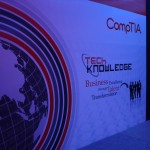 Carlota Perez, leading economist at Cambridge University and an expert in global techno-economic paradigm shifts, explains that every 70 years, a disruptive technology emerges that alters the foundations of the economy. The 5 ages of transformation to date include the industrial revolution; the age of steam and railways; the age of steel, electricity and heavy engineering; the age of oil, cars and mass production; and the age of information and telecommunications.
Carlota Perez, leading economist at Cambridge University and an expert in global techno-economic paradigm shifts, explains that every 70 years, a disruptive technology emerges that alters the foundations of the economy. The 5 ages of transformation to date include the industrial revolution; the age of steam and railways; the age of steel, electricity and heavy engineering; the age of oil, cars and mass production; and the age of information and telecommunications.
It interests me to see the technology changing so much and so fast. Will technology ever reach a settling point or just continue to evolve ad infinitum; it cannot be too long before it becomes a utility much like electricity and gas, and I can see just one global and seamless wireless network where every device we purchase is connected.
Technology has been a catalyst for taking away precious time – by being better connected we are working longer hours. On the train to London this week I counted as many people on their smart devices as those reading or sleeping and you can just see the frustration as we travelled through a tunnel and they lost connectivity! I look forward to when my fridge has sensors and RFID chips embedded in its doors that recognise when I am out of bread and milk and can order it on my behalf, when my camera (or phone) automatically uploads my photos to my piece of the Cloud immediately as I am taking them and my casserole tells me which ingredients go next into the pan – all so I can get back some of the previous time that technology has taken away in the first place!
So where has the week raced away to exactly? It included a long trip to South Africa for the CompTIA member conference in Johannesburg, a great networking and education event for the leading IT vendors and training companies, and then swiftly back again to host meetings with some of our largest partnerships in Europe: Zenos, the UK’s leading IT apprenticeship provider, the Oxford and Cambridge examinations board (OCR) and Intel. Intel are diversifying into some cool new areas, look forward to seeing more of that. Is there a connection between the people I met this week, regardless of location and business focus – there clearly is. Each party is looking for ways to improve the skills of their staff, customers and partners to differentiate them in the workplace. Technology appears to be accelerating change, and yet we don’t have the skills we need to even keep pace with the demands. There is a common recognition that unless we have the skilled people in place to manage and develop this technology, and to put it to effective use, we may not get the best out of it from all quarters, and quite possibly never get the time back that so many people crave.
The two fellows in this picture were idling away in the sunshine at the Lion & Rhino Park in Johannesburg earlier this week – not a care in the world as we drove past. I wonder if they heard about Steve Jobs’ announcement of the iCloud!

 Gadgets are the new cool – everyone wants the latest mobile phone, iPad 2, Motorola Xoom, Samsung Galaxy and a myriad of others. In fact, at the recent CRN PartnerConnect conference at the Ricoh Arena, where we talked about cloud business opportunities and mobility, our CEO Todd Thibodeaux brought all of these devices with him in his hand luggage and showed them to the audience, which generated a combination of laughter and interest. Todd also talked about making IT cool (
Gadgets are the new cool – everyone wants the latest mobile phone, iPad 2, Motorola Xoom, Samsung Galaxy and a myriad of others. In fact, at the recent CRN PartnerConnect conference at the Ricoh Arena, where we talked about cloud business opportunities and mobility, our CEO Todd Thibodeaux brought all of these devices with him in his hand luggage and showed them to the audience, which generated a combination of laughter and interest. Todd also talked about making IT cool (

 I love David and Goliath stories and so I was immersed in a story about independent bookshops that are bucking the trend and doing well against the giants of the e-tailing world. How? By putting to effective use their secret weapon: PEOPLE. Individuals with the specialist knowledge, people skills and personal touch to make customers want to go in and buy books, even though they are almost always cheaper online. Brilliant and encouraging for every small business.
I love David and Goliath stories and so I was immersed in a story about independent bookshops that are bucking the trend and doing well against the giants of the e-tailing world. How? By putting to effective use their secret weapon: PEOPLE. Individuals with the specialist knowledge, people skills and personal touch to make customers want to go in and buy books, even though they are almost always cheaper online. Brilliant and encouraging for every small business.



